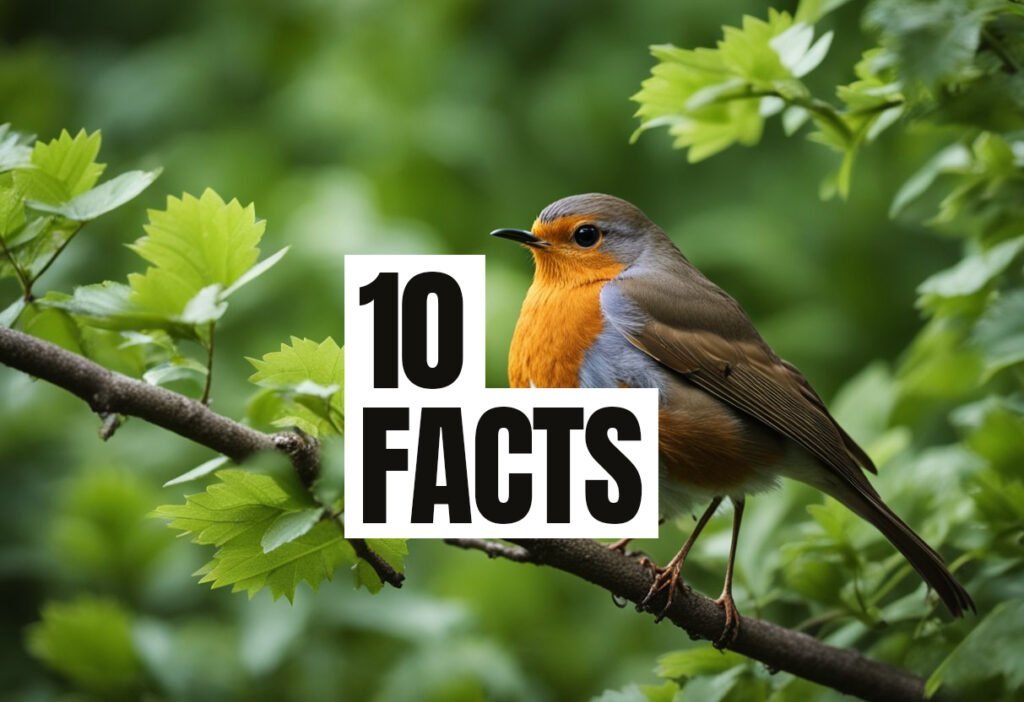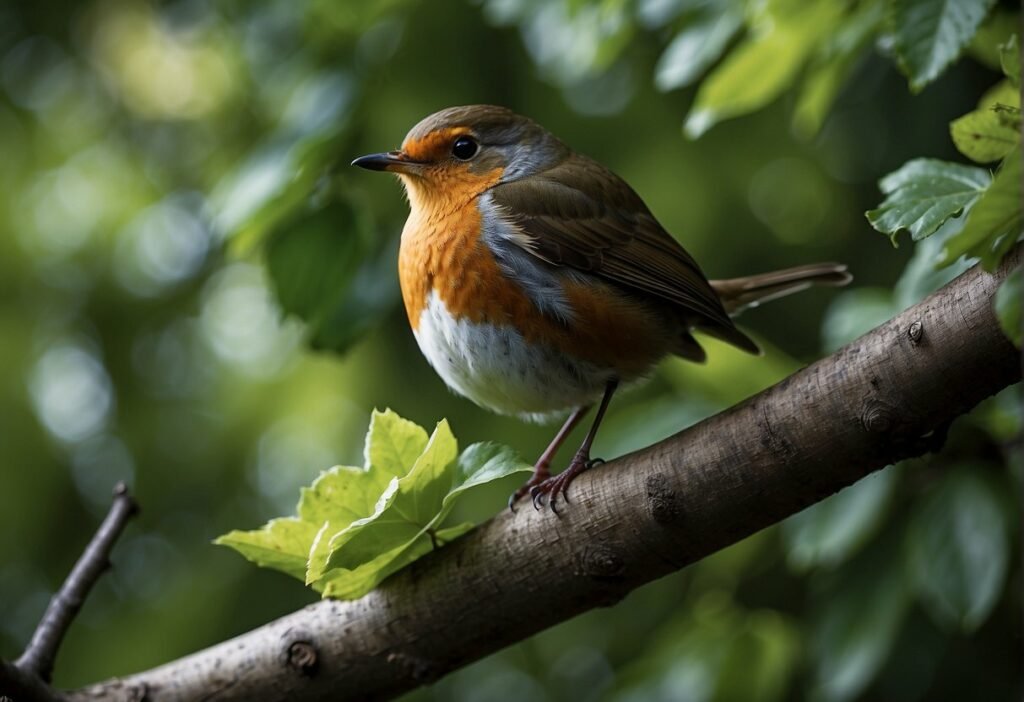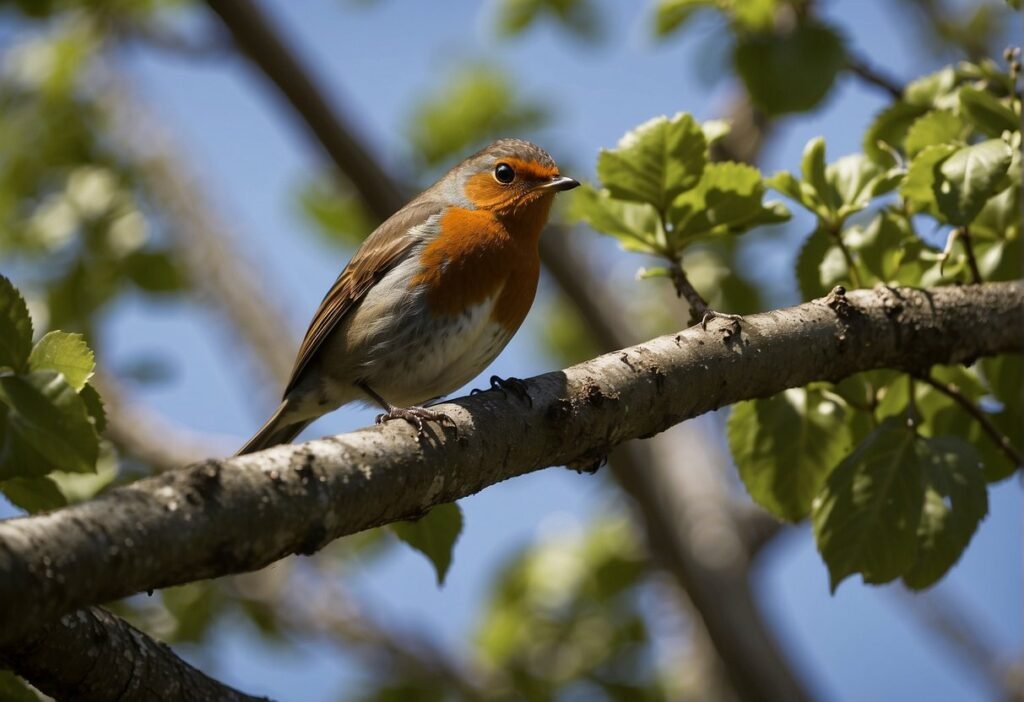Robins are one of the most common birds found throughout North America, and they are known for their beautiful singing and bright orange-red breast feathers. While many people may be familiar with these birds, few may be aware of their migration patterns. Understanding the migration patterns of robins can provide valuable insight into their behavior and ecology.

Robins are migratory birds, meaning that they travel long distances between their breeding and wintering grounds. In North America, robins breed in the northern part of the continent, including Alaska and Canada, and then migrate south for the winter. During the fall migration, robins can be seen in large flocks as they travel southward. However, some robins may remain in their breeding areas year-round if they have access to food and shelter during the winter months.
Understanding Robin Migration Patterns
Robins are migratory birds that are known for their distinctive orange-red breast feathers and beautiful singing. They are found throughout North America and have a unique migration pattern that is influenced by a variety of factors such as weather conditions, seasonal movements, and migratory behavior.
Behavioral Patterns and Triggers
Robins are known for their migratory restlessness, which is triggered by surging hormones. This restlessness causes them to become more active and restless, which often leads to singing and flying around more frequently. This behavior is often seen in the spring when robins are preparing for their northward migration.
Seasonal Movements and Timing
Robins typically migrate in rounds, moving southward in the fall and northward in the spring. The timing of their migration is influenced by weather conditions and the availability of food. In the fall, robins migrate southward to escape harsh weather and to find food sources that are more abundant in warmer temperatures. In the spring, they migrate northward to take advantage of the longer days and the abundance of food sources that become available as the weather warms up.
Climate change has also been shown to impact the migration patterns of robins. Studies have found that robins are migrating earlier in the spring and later in the fall due to changes in weather patterns and temperatures.
Overall, understanding the migration patterns of robins is important for conservation efforts and for understanding the impact of climate change on migratory birds. By studying their patterns and behaviors, researchers can work to protect their habitats and ensure their survival for future generations.
Critical Factors Influencing Migration
Robins are known for their long-distance migration, which is influenced by several critical factors. These factors include food sources and availability, geographical and environmental considerations, and risks and challenges.
Food Sources and Availability
Food sources play a significant role in robin migration patterns. Robins are omnivores and rely on a variety of food sources, including insects, berries, fruit, and earthworms. During the breeding season, robins feed mainly on insects, which are rich in protein and essential for the development of baby robins. As winter approaches, robins switch to a diet of fruit and berries, which are high in calories and help sustain them during their migration.
Geographical and Environmental Considerations
Geographical and environmental considerations also influence robin migration patterns. Robins breed in the northern states and Canada and migrate south to wintering grounds in the southern states and Mexico. Some robins are nomadic and wander in search of food sources, while others follow specific migration routes. Robins are also adaptable to different habitats, including forests, lakes, and urban areas.
Risks and Challenges
Robins face several risks and challenges during migration. Predators, such as cats and hawks, pose a threat to robins, especially fledglings. Collisions with communications towers and other structures are also a significant risk. Environmental conditions, such as cold weather and storms, can also impact robin migration patterns. Pesticides, such as DDT, have also had a significant impact on robin populations by reducing their food sources and causing predation and reproductive problems.
In conclusion, critical factors influencing robin migration patterns include food sources and availability, geographical and environmental considerations, and risks and challenges. Understanding these factors is essential for the conservation and management of robin populations.
Frequently Asked Questions
What factors influence the migration patterns of robins during winter?
The migration patterns of robins are influenced by several factors, including the availability of food and water, daylight length, and temperature. As winter approaches, robins move southward in search of food and water, which become scarce in colder regions. The length of daylight also plays a role in their migration, as robins rely on daylight to find food. Finally, temperature is a key factor, as robins are sensitive to cold weather and will migrate to warmer areas to survive.
How does the migratory behavior of robins differ across North America?
The migratory behavior of robins varies across North America, with some populations remaining in their breeding range year-round, while others migrate southward during winter. In general, robins in the western United States tend to be non-migratory, while those in the eastern and northern regions of the country migrate southward. Additionally, some robins in Canada and Alaska migrate southward to the United States during winter.
In which month are robins typically observed to start their southward migration?
Robins typically start their southward migration in August, although the exact timing can vary depending on the population and location. Some robins may start migrating as early as July, while others may wait until September or later. As winter approaches, more and more robins will begin their migration southward.
Can you provide a map illustrating the 2023 migration routes of robins?
Unfortunately, we do not have a map illustrating the 2023 migration routes of robins. Migration patterns can vary from year to year and are influenced by a variety of factors, so it can be difficult to predict exactly where robins will migrate in a given year.
What is the typical destination for robins migrating in August?
Robins migrating in August typically head southward to warmer regions, such as the southern United States, Mexico, and Central America. Some robins may travel as far south as South America, depending on their population and location.
What is the average distance traveled by robins during their migration?
The average distance traveled by robins during their migration can vary depending on the population and location. Some robins may only travel a few hundred miles, while others may travel thousands of miles. In general, robins in the eastern United States tend to migrate farther than those in the western United States.




